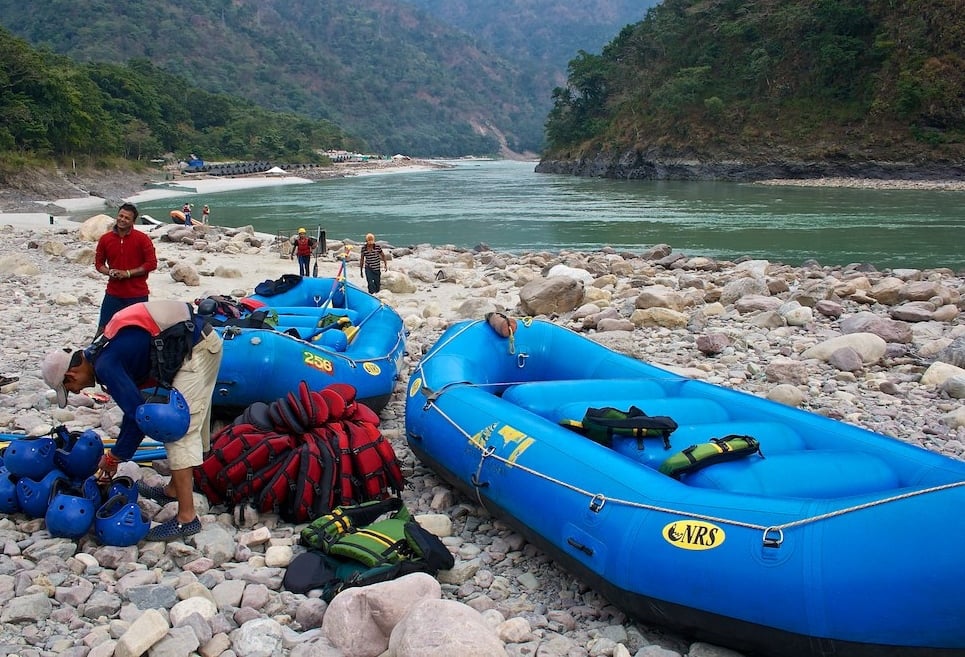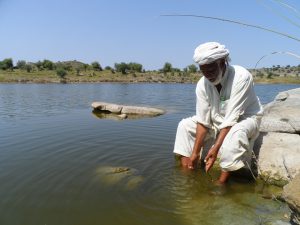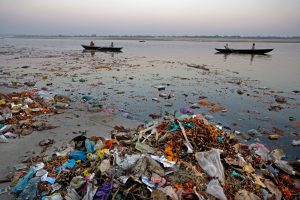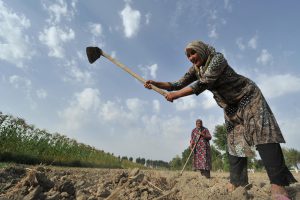The decision by the National Green Tribunal (NGT) – India’s top environmental court – to ban tourist camps along the 36-km stretch of River Ganga from Kaudiyala to Rishikesh in the Himalayan state of Uttarakhand has rankled the travel industry while raising larger questions about India’s inability to balance tourism with environmental concerns.
The NGT’s ban last week came after an NGO, Social Action for Forest and Environment (SAFE), filed a complaint against the “unregulated” operation of rafting camps in the region. The petition expressed concerns over “flattening of land” and “pollution caused by the temporary campsites” because of “improper sewage disposal, lack of sanitation and a general pollution caused by drinking alcohol, fire crackers etc.” The presence of camps, the plea added, negatively affected the ecology and wildlife of the area. In its order the NGT has allowed rafting to continue, which it feels is not detrimental to the region’s environment, but it has clamped down on all camping activity in view of its polluting nature. All temporary or permanent camps in Rishikesh are thus to be dismantled with immediate effect.
The Kaudiyala-Rishikesh stretch of the Ganga – a hugely popular camping and white water rafting site – attracts thousands of adventure lovers from India and abroad. It is peppered with white sandy beaches, rocky gorges, rapids and sun-dappled forests teeming with flora and fauna. A hub for tourism, the stretch has been hosting camps, guest houses, ashrams and hotels bolstering the local economy since the 1980s when the adventure tourism boom began.
At the same time the local authorities have not been able to regulate the business. Licences for rafting are issued by the Ministry of Tourism, and those for setting up beach camps are handed out either by the forest department or revenue land department. Fresh licences for camp sites are issued every year. However insiders say it is common for tour operators to grease palms and acquire permits even if they violate local environmental laws.
Local inhabitants and environmental lobbies complain of mountains of rubbish being left behind by revellers unsupervised by tour operators. “There is blatant disregard for rules and lack of sensitivity to the region’s fragile ecosystem. Empty bottles, cans of unconsumed food and waste including bones and filth lies around the campsite,” said Prateek Vajpayee, a local resident and former member of the Uttaranchal State Tourism Board. “The industry has failed to regulate itself.”
The Wildlife Institute of India (WII), an autonomous institution under the Ministry of Environment and Forests conducted a study in 2020. Its report the WII underscored the extent of neglect. After a survey of the stretch on a jet boat, the researchers concluded that out of the 34 camps reviewed, as many as 13 were flouting rules. The report suggested the urgent need “for a more intensive assessment of the ecological footprints of the camping activities and the economic valuation of nature tourism activities.”
Court ruling questioned
While the problems are there, it seems that they are of regulation rather than permission. The use of a ban by the NGT is seen as a severe overreaction. Gour Kanjilal, Executive Director of the Indian Association of Tour Operators described it as “cutting off the head to deal with a migraine.” He said that local authorities should hold the tour operators responsible for sensitising the tourists about do’s and don’ts of camping as the main problem is the litter that people leave behind or dump into the river. “The licenses of operators who don’t comply should be revoked.”
Globally, adds Kanjilal, rivers and their banks serve as asset to the economy, and are leveraged to boost tourism in places such as Singapore, France and London. This leads to infrastructure development and employment generation. “Why can’t we successfully follow the same template?” he asked.
The impact of the NGT’s ban will be a huge blow for the local economy. Kiran Bhatt, the President of the Indian Association of Rafting Outfitters (IARO) said that, “During peak season, we get around 40,000 tourists every week especially during weekends from neighbouring places like Delhi, Punjab and Haryana. The ban will mean a loss of millions of rupees to the operators.”
Pilgrims and urban pollution pose bigger threat
More troubling is the fact that despite these large numbers during tourist season, the campers and rafters are a very small portion of the total arrivals in the region. Far more detrimental to the health of the holy river is religious tourism. A study by the International Journal of Humanities and Social Science Invention reported that the amount of sewage dumped into the river ratchets up during the Char Dham Yatra season when nearly 1.5 million pilgrims visit the state from May through October. “Nobody seeks a ban on religious tourism,” argues Kanjilal, “so why stop camping?”
![Nearly 1.5 million religious tourists visit Rishikesh between May and October. [imagy by Rajesh Pamnani]](/wp-content/uploads/2015/12/Ganga-arti-Rishikesh.jpg)
Where does the solution lie? Shashank Shekhar, Assistant Professor of Geology at Delhi University, suggested that the government should regulate tourism by defining river spaces by using flood frequency data and earmarking zones where tourism activities can be conducted. “Also camp sites need to be auctioned in a proper manner. There needs to be a clear policy on who gets these and companies should bid for a camp and pay a premium on the type of land they get,” he added.
Working on alternatives is the key to sustainable tourism in the eco-sensitive zone, adds Shekhar. “Encouraging private-public partnership and sensitising all tourism stakeholders are the way to go.” As the WII report suggested, the way to promote ecotourism in the region is “by ensuring that the process of planning tourism projects are participatory and responsive to local needs.”
Unfortunately the NGT’s decision runs the risk of doing the opposite. It punishes the smallest polluters, whose activities could be regulated, and ignores biggest polluters of the region, letting them get away scot-free.






